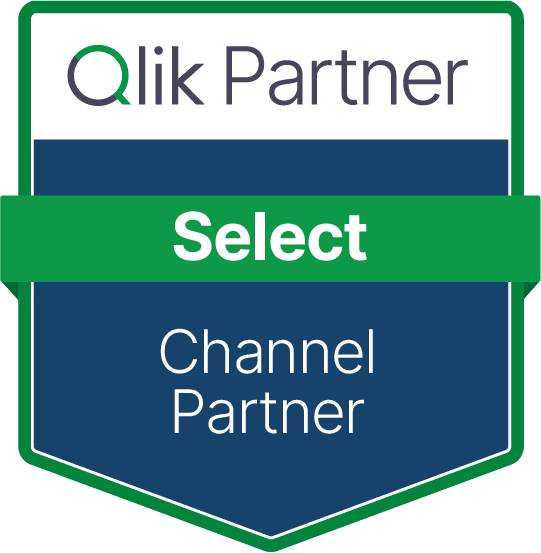HOSPITAL CONTROLLING -
Dornbirn Hospital uses Qlik as an interdisciplinary reporting system
DORNBIRN HOSPITAL
Industry
Hospital & Nursing Homes
Department
hospital wide
Region
Dornbirn, Austria
"Qlik provides us with a central management tool, which relevant key figures and analyses can be accessed easily and conviently..”
Dipl.-Kfm. Gerhard Amann, Head of Finance and Controlling, Dornbirn Hospital
The customer
The Dornbirn Municipal Hospital with 278 acute care beds ensures supraregional medical care for the population of the Vorarlberg Rhine Valley. Around 900 employees - including 158 doctors, 445 nursing staff and 256 people in administration (incl. kitchen, laundry) - care for around 40,000 outpatients and 15,000 inpatients every year. As an "academic teaching hospital", the clinic is also an important training center for future physicians, complementing their studies at the medical universities of Innsbruck, Vienna and Graz.
Initial situation
At all times, the focus of commitment for Dornbirn Hospital is the well-being and recovery of patients. One of the key points to ensure this endeavor also in daily work is the commitment to economic efficiency - taking into account medical and ecological interests. A basic prerequisite for this is the greatest possible transparency regarding key figures relevant to management. Dipl.-Kfm. Gerhard Amann, Head of Finance and Controlling at Dornbirn Hospital, was faced with the challenge of installing a compact key figure system that would automatically and regularly provide key figures for all hospital areas based on a variety of data sources from the heterogeneous IT landscape. Since small analyses were already being carried out in the medical area using Qlik technology, Dipl.-Kfm. Amann and the IT manager decided on the next implementation steps.
Qlik convinces with data provision at the push of a button "We implemented a plan/actual comparison of the staff positions in Qlik for the hospital management and had immediate success with it," reports Dipl.-Kfm. Gerhard Amann. "Instead of exporting data from the personnel system and preparing it in Excel, the figures were available at the push of a button. This made the decision to use Qlik as a central BI solution." For further expansion of the application landscape, Dornbirn Hospital sought support from ppmc. "On the one hand, we needed a back-up for my IT colleague and me to ensure that the solution would run even when we were absent," recalls the Head of Finance and Controlling. "On the other hand, we were looking for a partner who could support us with technological and professional expertise in the further development of the solution, as our internal resources were not sufficient for the desired rapid implementation of additional applications." The choice fell on ppmc due to its comprehensive technological know-how about Qlik as well as the source systems and its expertise in the hospital environment.
Solution
For the roll-out of the solution, data from ten different source systems had to be integrated. These include various SAP modules such as SAP IS-H with patient administration data and SAP FI (accounting data) as well as SAP CO (cost accounting data). Furthermore, LKF Score Allocator, a tool for performance-based hospital financing, the hospital information system Medfolio, Metavision as a solution for operating room and outpatient protocols, and PDMS (operating room data). HR solutions (Ally Personal and SPX as well as an Access database with training data) were also to be connected. Through various interfaces, each data source was directly connected to Qlik. Data is updated daily overnight. Specific applications for key figure generation, analysis and reporting for various topics and focal points were developed on an ongoing basis.
Areas of application and benefits
The result is a cross-clinic reporting system with various dashboards. The central entry point is a management dashboard with key figures for clinical management and administrative staff. All employees can use this dashboard to access department-specific information, depending on their access rights as defined in an authorization concept. For example, key performance indicators (KPIs) for human resources can be accessed. These include personnel costs, various personnel statistics on topics such as sick leave, fluctuation, age structure and length of service.
In addition, figures on new hires and apprenticeship positions as well as time data can be seen. For personnel development, topics such as the number and type of apprentices, advanced training and mandatory training courses, as well as employee appraisals are mapped. For financial controlling, a number of Qlik applications are available, via which topics such as investment controlling, medication costs, expenditure blocks by cost type, monthly reporting, the closing of accounts and estimates are mapped.
For the main topic of patients, anonymized patient, case and movement data are mapped in a structured manner according to outpatients, day clinic patients and inpatients. A case is divided into several administrative cases - as required - and these are in turn assigned to a single medical case. For example, anesthesia protocols, birth documentation, the number of consultations (e.g., dietary counseling, psychosocial service), and births are available, as well as other key figures on patients (frequencies, occupancy days, nursing days, admissions, bed utilization, length of stay, readmissions, age structure, discharge management, etc.). For OR management, key figures such as LKF points, the number of day-case admissions, delivery room frequencies and deliveries, as well as room occupancy and process times (column time, incision-suture time, etc.) are available. Also available is information on surgeries and surgical services, unbilled surgeries, as well as OR volume and emergency statistics.
Another dashboard is dedicated to the topic of performance-based hospital financing. Information on coding, diagnoses and treatments as well as LKF audits can be accessed. In addition, a day-clinic evaluation and evaluations of Medfolio requirements, diagnoses and services are available. The administration area has applications for costs and revenues as well as for LKF controlling. In addition, individual posting comparisons, data for apportionment procedures in SAP and an overview of cost type distribution can be called up. In addition, Qlik is used for contribution margin accounting and an internal control system for human resources and controlling/finance, for example, to keep track of one-time and special payments as well as payment flows. About 100 users are currently using the Qlik-based reporting system, which is continuously developed by Dipl.-Kfm. Gerhard Amann according to the requirements of the departments. "In doing so, ppmc supports us highly flexibly and with great dedication. If I had an urgent request on Friday afternoon, I received a solution on Monday morning. The cooperation was always very constructive and at eye level, which is very important to us. In addition, ppmc contributed very good ideas on how we can use our reporting system even better."
Tailored transparency for everyone
With the use of Qlik, Dornbirn Hospital benefits from the fact that information is available continuously, regularly and in the desired quality and depth, as well as being independently retrievable when it is needed. On the other hand, Qlik ensures a high degree of transparency, as Gerhard Amann confirms: "We have, for example, compiled a brief overview for each primary physician from the entire clutter of over 100 key figures according to his individual wishes. Depending on the doctor, there are between eight and 15 key figures, such as duty roster/actual comparison, hours of compensatory time, number of patient days, number of operating rooms, room occupancy times, performance points achieved, etc., which are available in color and in tabular form.
The primaries can see at a glance whether everything is "in the green" or where action needs to be taken. "I recently introduced a new primary physician at our hospital to our reporting," continues Dipl.-Kfm. Gerhard Amann "His comment: "Finally, I get the numbers I need easily and at a glance!" For Dipl.-Kfm. Gerhard Amann, the efficiency gains realized with Qlik are particularly noticeable at the beginning of the year: "Previously, countless requests for statistics for the previous year's review landed with me in January and February. Thanks to the self-service character of Qlik and our approach that reports that are needed at least once a year are mapped in Qlik and can be retrieved independently by the responsible colleagues, this effort has gone to zero for me. For example, the monthly report is always ready for retrieval on the 20th of the previous month. All users receive an e-mail informing them of this and can then work intensively with the data at the next meeting in which they present their divisional figures and can easily transfer them to a presentation. Instead of spending half a day laboriously transferring the figures from the individual programs to Excel and preparing them there, 15 minutes and a few clicks are now all it takes."
Future
In the future, Qlik will also be used by the independent Pflege-GmbH, which will take care of the operation of the two nursing homes of the city of Dornbirn. In addition, it is planned to use Qlik to make projections of the deviations in staffing levels during the year and on a reporting date basis. In addition, Qlik will be used for financial planning.








